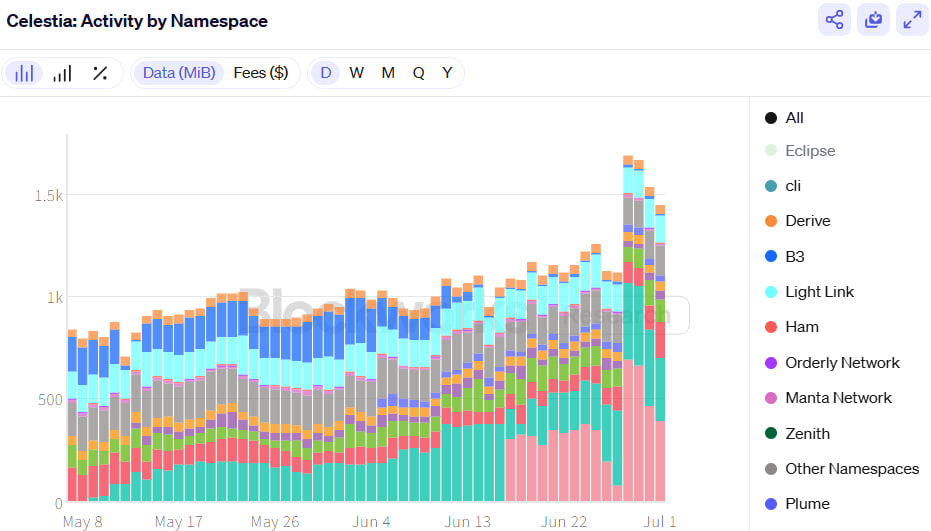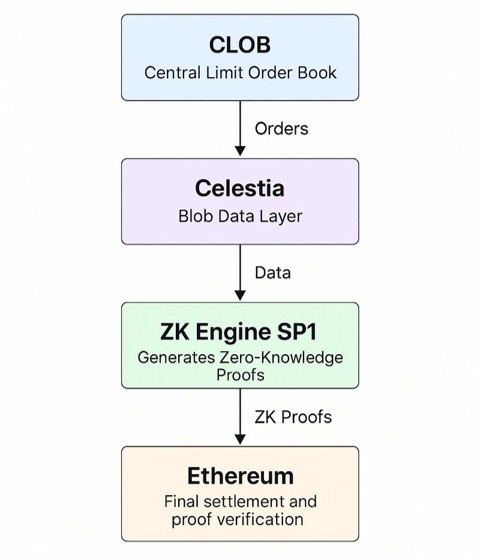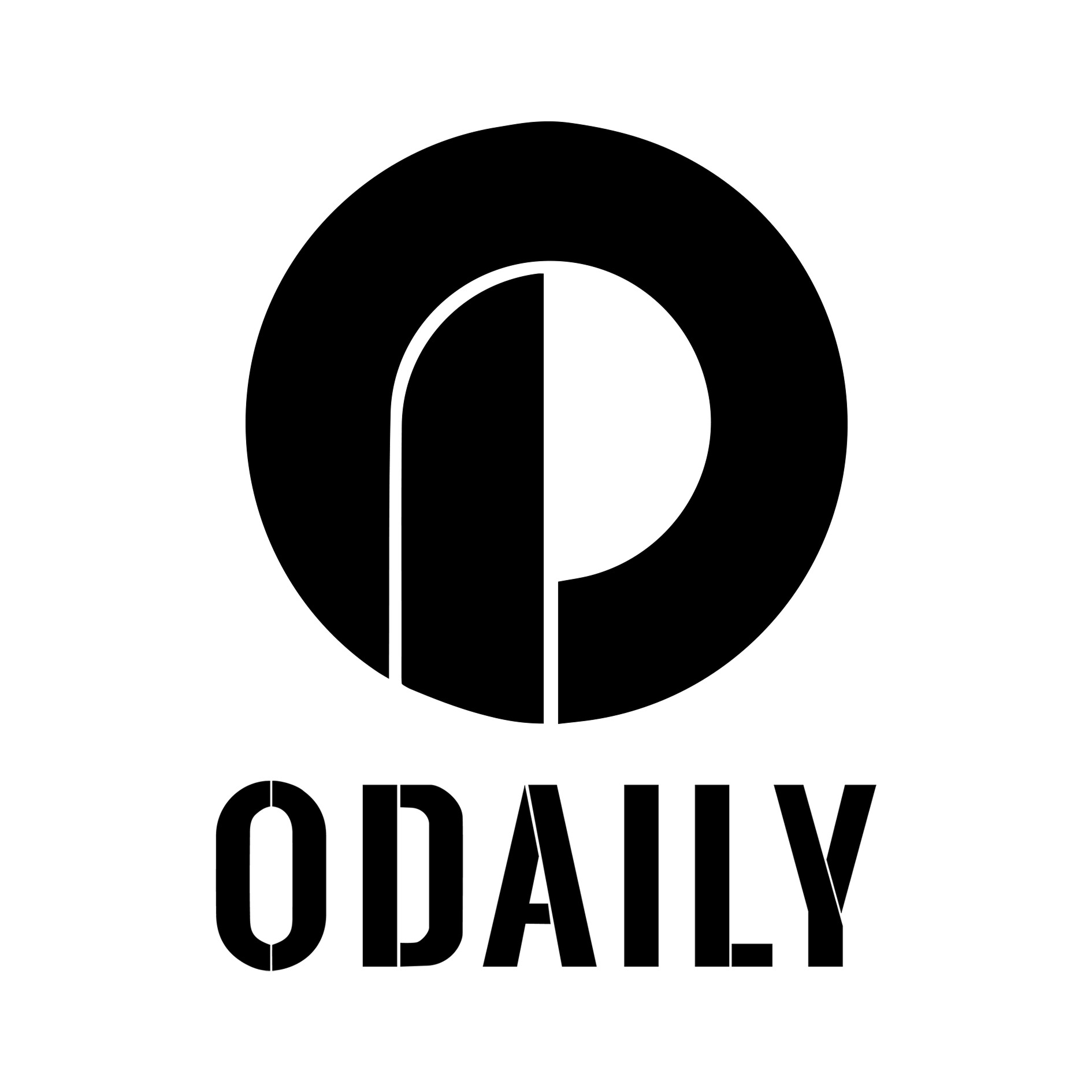Este token não está disponível na corretora OKX. Você pode negociá-lo na OKX DEX.

robinhood
Preço de robinwifhood hoje

BPX26L...pump
$0,000019261
-$0,00036
(-94,92%)
Alteração de preço nas últimas 24 horas
USD
Não conseguimos encontrar. Verifique sua ortografia ou tente de novo.
Como você está se sentindo em relação ao preço de robinhood hoje?
Compartilhe seus sentimentos! Se você acredita que a cotação continuará subindo, marque o polegar para cima. Caso esteja cauteloso(a), marque o polegar para baixo e acompanhe as atualizações no gráfico histórico para uma análise mais aprofundada.
Vote para ver os resultados
Informações do preço de robinhood agora
Valor de mercado
O valor de mercado é calculado multiplicando a oferta circulante de uma moeda pelo seu preço mais recente.
Valor de mercado = Oferta circulante × Último preço
Valor de mercado = Oferta circulante × Último preço
Rede
Blockchain subjacente que suporta transações seguras e descentralizadas.
Oferta circulante
Montante total de uma moeda que está disponível ao público no mercado.
Liquidez
Liquidez é a facilidade de compra/venda de uma moeda na DEX. Quanto maior for a liquidez, mais fácil será concluir uma transação.
Valor de mercado
$19,26 mil
Rede
Solana
Oferta circulante
999.735.397 robinhood
Holders de token
686
Liquidez
$16,97 mil
Volume em 1h
$4,25 mil
Volume em 4h
$10,99 mil
Volume em 24h
$1,61 mi
Feed robinwifhood
O seguinte conteúdo é proveniente de .

O amor tem um lado egoísta,
Às vezes, eles forçam sacrifícios.
É realmente um amor terrível.
"CLOBs em blobs"


Professor Jo 🐙
<CLOBs on Blobs 🦣 and Celestia’s Comeback>
In the second half of 2023, modular blockchains and rollups were at the center of crypto’s dominant narrative. However, as time passed, the narrative lost momentum due to a lack of users and decreasing transaction activity. Celestia’s blobspace also remained underutilized for a period. But things are changing again.
A new narrative, “CLOBs on Blobs,” is driving real demand for Celestia’s data availability (DA) layer—not just hype, but actual on-chain traffic. I sat down with Nick White from @celestia, to discuss their long-term vision, technical philosophy, and the structural changes behind this renewed momentum.
1. Celestia’s Core Principle: Verifiability
Throughout the interview, @nickwh8te emphasized that “the essence of blockchain is verifiability.” DA is not just about storing data—it's a foundational component that ensures blockchain security. Celestia was designed so that anyone can independently verify data, relying not on centralized structures like DACs (Data Availability Committees), but instead on Data Availability Sampling (DAS).
To clarify: DACs rely on a small group of servers to store off-chain data and sign off on its availability. In contrast, DAS allows data to be verified via random sampling, without requiring high bandwidth or powerful hardware. This concept was introduced in a 2018 paper co-authored by Celestia co-founder Mustafa Al-Bassam and Ethereum’s Vitalik Buterin—and Celestia is the first project to bring it to mainnet.
2. Rollups Aren’t Dead—Real Demand Is Emerging
Interest in rollups faded by late 2023. As blob usage on Celestia declined, many began to question whether the rollup thesis was over. Nick countered this sentiment by referencing the Gartner Hype Cycle: "Every technology goes through a phase of disillusionment." Celestia, he said, is now entering the early stage of actual adoption.
He pointed to a growing trend. Traditional financial institutions and crypto exchanges are expanding into on-chain trading. Robinhood launched tokenized stock trading on @arbitrum, Coinbase introduced its L2 chain Base, Kraken unveiled Ink, and Worldcoin launched World Chain—all of them rollup-based. As these platforms scale, demand for a robust DA layer like Celestia becomes increasingly critical.
Nick noted that rollups offer what general-purpose L1s cannot: low latency, customizable execution environments, and independent economic models. These advantages require strong DA infrastructure to maintain performance and trust—which is precisely where Celestia fits in.
Nick also shared a compelling vision for Celestia’s long-term revenue model. While it currently generates income through DA fees, he emphasized that future value will come from shared revenue with rollup execution layers. As native rollups on Celestia proliferate and build their own execution environments, a portion of the economic activity they generate could be shared with the DA layer itself—similar to how Solana captures value from its execution layer.
This approach positions Celestia not just as infrastructure, but as a platform that captures value across the entire rollup ecosystem. Nick highlighted this structural design as a key reason to be optimistic about Celestia’s long-term future—beyond short-term market cycles.
As a prime example, Nick mentioned Robinhood’s tokenized stock rollout as “just the beginning.” While Ethereum DA may be sufficient at first, growing user activity will eventually strain its capacity—opening the door for Celestia to become the go-to alternative. Several TradFi firms are exploring decentralized infrastructure for stocks, options, and derivatives, all of which demand low latency, high throughput, and verifiability. According to Nick, Celestia is best positioned to meet all three.
3. CLOB on Blobs: The Next Wave of Blob Demand
Blob usage on Celestia has surged recently, driven by the emergence of CLOB-based on-chain exchanges. Platforms like Hyperliquid and Hibachi are building decentralized exchanges with performance comparable to centralized ones—including fine-tuned price discovery, low-latency order matching, and complex fee models. These require massive data throughput and can only operate on rollup infrastructure.
Celestia currently offers 1.33 MB/s of DA throughput (roughly equivalent to 10,000 TPS) and is targeting scalability of up to 200,000 TPS through future upgrades. As a result, blob demand has tripled in the past three months. Beyond Hibachi, other CLOB or options-focused rollups like Rise and Derive are also integrating—or actively evaluating—Celestia.
4. Expanding $TIA Utility and Controlling Inflation
Celestia’s native token, $TIA, was initially used solely for paying blob fees. But the upcoming Lotus upgrade (expected in July) will significantly expand its utility. With Hyperlane bridging support, $TIA will become transferable across other chains like Ethereum and Solana, enabling its use as a yield-bearing asset within DeFi.
Celestia is also addressing concerns around token inflation. The current 7% annual inflation rate is set to drop to 5%, then eventually 4%, with a long-term target of 2.5% under a proposed “Proof of Governance” model. Additionally, most VC tokens will be fully unlocked by November 2025, which should ease long-term supply pressure.
5. From Technology to Demand-Driven Proof
What became clear through this interview is that Celestia is no longer just a technology story—it’s now about real demand. As on-chain exchanges scale, blob usage rises. If revenue-sharing from execution layers materializes, Celestia’s REV (Real Economy Value) will grow significantly. In short, the project is approaching a point where its tech and vision may soon be validated by numbers.
While some near-term supply concerns remain due to upcoming token unlocks, the broader picture is becoming more favorable. With inflation being adjusted and $TIA entering DeFi, it’s becoming easier to imagine a more robust and sustainable Celestia ecosystem on the horizon.




Por trás da tokenização de ações dos EUA: um retorno a uma narrativa ou um sinal para a evolução das estruturas financeiras da Web3?
Recentemente, quando abri o Twitter, a tela estava cheia de tokenização de ações dos EUA. Não é exagero dizer que, se você não discutiu isso nos últimos dias, provavelmente significa que você perdeu o contato com o mercado.
"Ações dos EUA na cadeia" é o maior ponto quente do mercado esta semana. Robinhood lançou um serviço de tokenização de ações na Europa, enquanto xStocks também foi lançado na Kraken e Bybit. Solana DEX e o ecossistema Arbitrum começaram a listar AAPLx, TSLAx e outros pares de negociação, e um novo conjunto de narrativas, como tokenização de ações, foi rapidamente lançado.
Mas se você só vê o calor e não entende a estrutura, então você pode se tornar um alho-poró nesta narrativa.
Na minha opinião, a tokenização de ações não é essencialmente um "token", mas um teste de estresse das finanças on-chain:
O mundo Web3 pode realmente hospedar a emissão, negociação, precificação e resgate de ativos financeiros convencionais?
Não é um calor, é um teste de estresse estrutural das finanças on-chain
Do meu ponto de vista, nossa narrativa do setor está em constante evolução em ciclos. Já em 2019, tanto a Binance quanto a FTX tentaram tokenizar as ações dos EUA, mas ambas acabaram sendo fechadas pelos reguladores. O Mirror Protocol, que usava ativos sintéticos para simular os preços das ações dos EUA, também morreu com o crash do Terra e a regulamentação da SEC. Isso não é uma coisa nova, mas a indústria não estava muito madura naquela época.
E a tokenização de ações de hoje não é um experimento imprudente, mas um caminho de conformidade liderado por instituições licenciadas como Robinhood e Backed Finance. Esta é uma bacia hidrográfica crítica.
Tomando Robinhood como exemplo, o serviço de tokenização de ações lançado na Europa desta vez seguiu um caminho de circuito fechado sem precedentes de "emissão de propriedade do corretor + on-chain".
Em vez de simplesmente listar um preço na cadeia, Robinhood é licenciado na UE por conta própria, comprando ações reais dos EUA e emitindo tokens mapeados 1:1 na cadeia. Desde a custódia, emissão, compensação e liquidação e interação do usuário, todo o processo está conectado e a experiência de negociação é basicamente próxima da combinação de conta de títulos + carteira.
No estágio inicial, eles implantaram esses tokens no Arbitrum para garantir que a velocidade e o custo das transações on-chain fossem controláveis e, posteriormente, planejaram mudar para a Robinhood Chain autoconstruída, o que significa que toda a infraestrutura também deve ser controlada por eles mesmos.
Embora os direitos de voto ainda não possam ser abertos, porque é necessário evitar a supervisão da governança, a estrutura geral já pode ser vista no protótipo: é como estabelecer um "sistema de negociação de valores mobiliários on-chain" quase independente no nível estrutural.
Para a indústria de criptomoedas, esta é a primeira vez que uma corretora online tradicional, não só tem autonomia do lado da emissão, mas também realizou uma desconstrução da estrutura on-chain dos ativos.
De testes imprudentes a fechamentos de conformidade
Esta rodada de tokenização de ações não é acidental, como já repeti antes. Essencialmente, várias variáveis centrais ressoam no mesmo momento. A chamada hora, lugar e pessoas certas, provavelmente é isso.
Em primeiro lugar, há o afrouxamento do nível regulatório e a clareza da direção. Por exemplo, o MiCA na Europa desembarcou oficialmente, e a SEC nos Estados Unidos parou de disparar cegamente o martelo e começou a divulgar alguns sinais que "podem ser falados e podem ser feitos".
Robinhood foi capaz de lançar seu serviço de token de ações na UE tão rapidamente por causa de sua licença de valores mobiliários na Lituânia; O fato de a xStocks estar conectada à Kraken e à Bybit também é inseparável das estruturas de conformidade que ela construiu na Suíça e em Jersey.
Ao mesmo tempo, como os fundos da cadeia estão de fato procurando novos ativos para exportar, a estrutura dos fundos no mercado mudou. A diferença entre os mercados financeiros tradicionais e os mercados criptográficos não-MEME só vai diminuir.
Olhando para o presente, há um monte de projetos na cadeia que não têm fundamentos, mas têm um FDV ultra-alto, e não há lugar para a liquidez ir para lá, e fundos estáveis também começaram a encontrar pontos de alocação de ativos "âncora e lógicos". Neste momento, exércitos regulares como Robinhood e xStocks entram com estruturas e experiências de negociação compatíveis, e os tokens de ações se tornam atraentes. É familiar, é estável, tem um espaço narrativo e também está vinculado a stablecoins e DeFi.
A combinação de TradFi e Crypto tem se aprofundado cada vez mais. Da BlackRock ao JPMorgan Chase, do UBS ao MAS, os gigantes financeiros tradicionais não estão mais à margem, mas estão realmente construindo cadeias, executando pilotos e fazendo infraestrutura. Como o ativo mais popular e reconhecível, as ações obviamente se tornarão a escolha preferida para tokenização.
A cadeia de ativos tradicionais é uma oportunidade para criptomoedas ou uma ameaça aos projetos?
A visão subjetiva de Jiayi:
Olhando para o futuro, a tokenização de ações provavelmente não será uma curva de crescimento explosiva, mas tem o potencial de se tornar um caminho de evolução de infraestrutura muito resiliente no mundo Web3.
A importância dessa narrativa reside no fato de que ela trouxe duas mudanças estruturais importantes: primeiro, os limites dos ativos começaram a migrar verdadeiramente para a cadeia e, segundo, o sistema financeiro tradicional está disposto a usar o método on-chain para organizar parte do processo de transação e custódia. Essas duas coisas, uma vez estabelecidas, são irreversíveis.
Então, é bom ou ruim que as ações corram para a liquidez do projeto Crypto?
Na minha opinião, esta é uma típica faca de dois gumes. Ele traz ativos de maior qualidade, mas também reescreve sutilmente a estrutura de fluxo de fundos na cadeia.
Da frente:
1. A entrada de "ativos blue-chip" nas finanças tradicionais deu novos lugares para fundos on-chain e também adicionou algumas opções para a alocação de "ativos estáveis". Em um mercado onde a narrativa gira muito rápido e os fundos se movem por muito tempo, esse tipo de ativo com uma estrutura clara e pontos de ancoragem realistas estão realmente ajudando a liquidez a recuperar as coordenadas básicas de "onde alocar e onde combinar".
2. Ao mesmo tempo, isso também trará o "efeito bagre". Assim que o forte ativo narrativo da tokenização de ações dos EUA surgiu, o benchmark de toda a cadeia foi elevado, o que inevitavelmente aumentará a qualidade geral dos projetos Web3. Vamos deixar o projeto do lixo ser eliminado do mercado, no meu coração.
3. Os jogadores de criptomoedas podem comprar ações diretamente na forma de Cypto Native, o que reduz a sucção de liquidez do grande pool de criptomoedas pelas ações dos EUA
Mas olhe para o contrário:
1. Também pressiona os projetos cripto-nativos. Não apenas a narrativa será roubada, mas a estrutura de capital e as preferências do usuário na cadeia também serão lentamente reformuladas. Especialmente quando as ações tokenizadas se tornarem líquidas e começarem a executar perp, empréstimos e alocação de portfólio, elas competirão diretamente com os ativos nativos pelo tráfego de stablecoin, usuários convencionais e atenção on-chain.
2. Para a parte do projeto: será difícil obter financiamento. Quando houver AAPLx, TSLAx e, no futuro, private equity tokenizado da OpenAI ou SpaceX aparecerá no pool de ativos on-chain. Os julgamentos intuitivos de investidores e usuários sobre "no que vale a pena investir" e "no que tem uma âncora de preços" migrarão.
A tokenização de ações nos faz repensar: a Web3 é um sistema que pode transportar ativos convencionais e comportamento comercial real? Podemos usar uma estrutura financeira aberta para reconstruir um sistema de valores mobiliários com menor atrito e maior transparência do que o mercado tradicional?

excelente artigo sobre o passado, presente e futuro de Celestia
Quando um professor fala, você deve ouvir!

Professor Jo 🐙
<CLOBs on Blobs 🦣 and Celestia’s Comeback>
In the second half of 2023, modular blockchains and rollups were at the center of crypto’s dominant narrative. However, as time passed, the narrative lost momentum due to a lack of users and decreasing transaction activity. Celestia’s blobspace also remained underutilized for a period. But things are changing again.
A new narrative, “CLOBs on Blobs,” is driving real demand for Celestia’s data availability (DA) layer—not just hype, but actual on-chain traffic. I sat down with Nick White from @celestia, to discuss their long-term vision, technical philosophy, and the structural changes behind this renewed momentum.
1. Celestia’s Core Principle: Verifiability
Throughout the interview, @nickwh8te emphasized that “the essence of blockchain is verifiability.” DA is not just about storing data—it's a foundational component that ensures blockchain security. Celestia was designed so that anyone can independently verify data, relying not on centralized structures like DACs (Data Availability Committees), but instead on Data Availability Sampling (DAS).
To clarify: DACs rely on a small group of servers to store off-chain data and sign off on its availability. In contrast, DAS allows data to be verified via random sampling, without requiring high bandwidth or powerful hardware. This concept was introduced in a 2018 paper co-authored by Celestia co-founder Mustafa Al-Bassam and Ethereum’s Vitalik Buterin—and Celestia is the first project to bring it to mainnet.
2. Rollups Aren’t Dead—Real Demand Is Emerging
Interest in rollups faded by late 2023. As blob usage on Celestia declined, many began to question whether the rollup thesis was over. Nick countered this sentiment by referencing the Gartner Hype Cycle: "Every technology goes through a phase of disillusionment." Celestia, he said, is now entering the early stage of actual adoption.
He pointed to a growing trend. Traditional financial institutions and crypto exchanges are expanding into on-chain trading. Robinhood launched tokenized stock trading on @arbitrum, Coinbase introduced its L2 chain Base, Kraken unveiled Ink, and Worldcoin launched World Chain—all of them rollup-based. As these platforms scale, demand for a robust DA layer like Celestia becomes increasingly critical.
Nick noted that rollups offer what general-purpose L1s cannot: low latency, customizable execution environments, and independent economic models. These advantages require strong DA infrastructure to maintain performance and trust—which is precisely where Celestia fits in.
Nick also shared a compelling vision for Celestia’s long-term revenue model. While it currently generates income through DA fees, he emphasized that future value will come from shared revenue with rollup execution layers. As native rollups on Celestia proliferate and build their own execution environments, a portion of the economic activity they generate could be shared with the DA layer itself—similar to how Solana captures value from its execution layer.
This approach positions Celestia not just as infrastructure, but as a platform that captures value across the entire rollup ecosystem. Nick highlighted this structural design as a key reason to be optimistic about Celestia’s long-term future—beyond short-term market cycles.
As a prime example, Nick mentioned Robinhood’s tokenized stock rollout as “just the beginning.” While Ethereum DA may be sufficient at first, growing user activity will eventually strain its capacity—opening the door for Celestia to become the go-to alternative. Several TradFi firms are exploring decentralized infrastructure for stocks, options, and derivatives, all of which demand low latency, high throughput, and verifiability. According to Nick, Celestia is best positioned to meet all three.
3. CLOB on Blobs: The Next Wave of Blob Demand
Blob usage on Celestia has surged recently, driven by the emergence of CLOB-based on-chain exchanges. Platforms like Hyperliquid and Hibachi are building decentralized exchanges with performance comparable to centralized ones—including fine-tuned price discovery, low-latency order matching, and complex fee models. These require massive data throughput and can only operate on rollup infrastructure.
Celestia currently offers 1.33 MB/s of DA throughput (roughly equivalent to 10,000 TPS) and is targeting scalability of up to 200,000 TPS through future upgrades. As a result, blob demand has tripled in the past three months. Beyond Hibachi, other CLOB or options-focused rollups like Rise and Derive are also integrating—or actively evaluating—Celestia.
4. Expanding $TIA Utility and Controlling Inflation
Celestia’s native token, $TIA, was initially used solely for paying blob fees. But the upcoming Lotus upgrade (expected in July) will significantly expand its utility. With Hyperlane bridging support, $TIA will become transferable across other chains like Ethereum and Solana, enabling its use as a yield-bearing asset within DeFi.
Celestia is also addressing concerns around token inflation. The current 7% annual inflation rate is set to drop to 5%, then eventually 4%, with a long-term target of 2.5% under a proposed “Proof of Governance” model. Additionally, most VC tokens will be fully unlocked by November 2025, which should ease long-term supply pressure.
5. From Technology to Demand-Driven Proof
What became clear through this interview is that Celestia is no longer just a technology story—it’s now about real demand. As on-chain exchanges scale, blob usage rises. If revenue-sharing from execution layers materializes, Celestia’s REV (Real Economy Value) will grow significantly. In short, the project is approaching a point where its tech and vision may soon be validated by numbers.
While some near-term supply concerns remain due to upcoming token unlocks, the broader picture is becoming more favorable. With inflation being adjusted and $TIA entering DeFi, it’s becoming easier to imagine a more robust and sustainable Celestia ecosystem on the horizon.




<CLOBs on Blobs 🦣 and Celestia’s Comeback>
In the second half of 2023, modular blockchains and rollups were at the center of crypto’s dominant narrative. However, as time passed, the narrative lost momentum due to a lack of users and decreasing transaction activity. Celestia’s blobspace also remained underutilized for a period. But things are changing again.
A new narrative, “CLOBs on Blobs,” is driving real demand for Celestia’s data availability (DA) layer—not just hype, but actual on-chain traffic. I sat down with Nick White from @celestia, to discuss their long-term vision, technical philosophy, and the structural changes behind this renewed momentum.
1. Celestia’s Core Principle: Verifiability
Throughout the interview, @nickwh8te emphasized that “the essence of blockchain is verifiability.” DA is not just about storing data—it's a foundational component that ensures blockchain security. Celestia was designed so that anyone can independently verify data, relying not on centralized structures like DACs (Data Availability Committees), but instead on Data Availability Sampling (DAS).
To clarify: DACs rely on a small group of servers to store off-chain data and sign off on its availability. In contrast, DAS allows data to be verified via random sampling, without requiring high bandwidth or powerful hardware. This concept was introduced in a 2018 paper co-authored by Celestia co-founder Mustafa Al-Bassam and Ethereum’s Vitalik Buterin—and Celestia is the first project to bring it to mainnet.
2. Rollups Aren’t Dead—Real Demand Is Emerging
Interest in rollups faded by late 2023. As blob usage on Celestia declined, many began to question whether the rollup thesis was over. Nick countered this sentiment by referencing the Gartner Hype Cycle: "Every technology goes through a phase of disillusionment." Celestia, he said, is now entering the early stage of actual adoption.
He pointed to a growing trend. Traditional financial institutions and crypto exchanges are expanding into on-chain trading. Robinhood launched tokenized stock trading on @arbitrum, Coinbase introduced its L2 chain Base, Kraken unveiled Ink, and Worldcoin launched World Chain—all of them rollup-based. As these platforms scale, demand for a robust DA layer like Celestia becomes increasingly critical.
Nick noted that rollups offer what general-purpose L1s cannot: low latency, customizable execution environments, and independent economic models. These advantages require strong DA infrastructure to maintain performance and trust—which is precisely where Celestia fits in.
Nick also shared a compelling vision for Celestia’s long-term revenue model. While it currently generates income through DA fees, he emphasized that future value will come from shared revenue with rollup execution layers. As native rollups on Celestia proliferate and build their own execution environments, a portion of the economic activity they generate could be shared with the DA layer itself—similar to how Solana captures value from its execution layer.
This approach positions Celestia not just as infrastructure, but as a platform that captures value across the entire rollup ecosystem. Nick highlighted this structural design as a key reason to be optimistic about Celestia’s long-term future—beyond short-term market cycles.
As a prime example, Nick mentioned Robinhood’s tokenized stock rollout as “just the beginning.” While Ethereum DA may be sufficient at first, growing user activity will eventually strain its capacity—opening the door for Celestia to become the go-to alternative. Several TradFi firms are exploring decentralized infrastructure for stocks, options, and derivatives, all of which demand low latency, high throughput, and verifiability. According to Nick, Celestia is best positioned to meet all three.
3. CLOB on Blobs: The Next Wave of Blob Demand
Blob usage on Celestia has surged recently, driven by the emergence of CLOB-based on-chain exchanges. Platforms like Hyperliquid and Hibachi are building decentralized exchanges with performance comparable to centralized ones—including fine-tuned price discovery, low-latency order matching, and complex fee models. These require massive data throughput and can only operate on rollup infrastructure.
Celestia currently offers 1.33 MB/s of DA throughput (roughly equivalent to 10,000 TPS) and is targeting scalability of up to 200,000 TPS through future upgrades. As a result, blob demand has tripled in the past three months. Beyond Hibachi, other CLOB or options-focused rollups like Rise and Derive are also integrating—or actively evaluating—Celestia.
4. Expanding $TIA Utility and Controlling Inflation
Celestia’s native token, $TIA, was initially used solely for paying blob fees. But the upcoming Lotus upgrade (expected in July) will significantly expand its utility. With Hyperlane bridging support, $TIA will become transferable across other chains like Ethereum and Solana, enabling its use as a yield-bearing asset within DeFi.
Celestia is also addressing concerns around token inflation. The current 7% annual inflation rate is set to drop to 5%, then eventually 4%, with a long-term target of 2.5% under a proposed “Proof of Governance” model. Additionally, most VC tokens will be fully unlocked by November 2025, which should ease long-term supply pressure.
5. From Technology to Demand-Driven Proof
What became clear through this interview is that Celestia is no longer just a technology story—it’s now about real demand. As on-chain exchanges scale, blob usage rises. If revenue-sharing from execution layers materializes, Celestia’s REV (Real Economy Value) will grow significantly. In short, the project is approaching a point where its tech and vision may soon be validated by numbers.
While some near-term supply concerns remain due to upcoming token unlocks, the broader picture is becoming more favorable. With inflation being adjusted and $TIA entering DeFi, it’s becoming easier to imagine a more robust and sustainable Celestia ecosystem on the horizon.



Desempenho do preço de robinhood em USD
O preço de robinwifhood hoje é $0,000019261. Nas últimas 24 horas, a robinwifhood apresentou baixou de -94,92%. No momento, há uma oferta circulante de 999.735.397 robinhood e uma oferta máxima de 999.735.397 robinhood, o que representa uma capitalização de mercado totalmente diluída de $19,26 mil. O preço de robinwifhood/USD é atualizado em tempo real.
5 min
+0,15%
1 h
+1,89%
4h
+18,71%
24h
-94,92%
Sobre robinwifhood (robinhood)
robinhood Perguntas Frequentes
Qual é o preço atual de robinwifhood hoje?
O preço atual de 1 robinhood hoje é de $0,000019261, com variação de -94,92% nas últimas 24 horas.
Posso comprar robinhood na OKX?
Não, atualmente robinhood não está disponível na OKX. Para se manter atualizado sobre quando robinhood estiver disponível, cadastre-se nas notificações ou siga-nos nas redes sociais. Anunciaremos novas adições de criptomoedas assim que estiverem listadas.
Por que o preço de robinhood flutua?
O preço de robinhood flutua devido à dinâmica global de oferta e demanda típica das criptomoedas. Sua volatilidade a curto-prazo pode ser atribuída a mudanças significativas nessas forças de mercado.
Quanto vale 1 robinwifhood hoje?
Atualmente, um robinwifhood vale $0,000019261. Aqui é o lugar certo para entender melhor a variação de preço de robinwifhood. Confira os gráficos atuais de robinwifhood e negocie com responsabilidade na OKX.
O que é criptomoeda?
Criptomoedas, como a robinwifhood, são ativos digitais que operam em registros públicos chamados de blockchains. Saiba mais sobre as moedas e os tokens oferecidos na OKX e seus diferentes atributos, que incluem preços dinâmicos e gráficos em tempo real.
Quando as criptomoedas foram inventadas?
Com a crise financeira de 2008, o interesse em finanças descentralizadas disparou. O Bitcoin oferecia uma solução inovadora por ser um ativo digital seguro em uma rede descentralizada. Desde então, muitos outros tokens, como robinwifhood, foram criados.
Aviso legal
O conteúdo social nesta página ("Conteúdo"), incluindo, entre outros, tweets e estatísticas fornecidas pela LunarCrush, vem de terceiros e é apresentado "como está", apenas para fins informativos. A OKX não garante a qualidade nem a precisão do Conteúdo, que não reflete as opiniões da OKX. Este conteúdo não constitui: (i) consultoria ou recomendação de investimento; (ii) oferta ou solicitação de compra, venda ou reserva de ativos digitais; ou (iii) assessoria financeira, contábil, jurídica ou fiscal. Os ativos digitais, incluindo stablecoins e NFTs, envolvem um alto grau de risco e podem flutuar muito. O preço e o desempenho dos ativos digitais não são garantidos e podem mudar sem aviso prévio.
A OKX não fornece recomendações de investimento ou ativo. Você deve considerar cuidadosamente se trading ou holding de ativos digitais é adequado para sua condição financeira. Consulte seu profissional da área jurídica/fiscal/investimentos para esclarecer dúvidas sobre suas circunstâncias específicas. permitidos trabalhos derivados nem outros usos deste artigo. Para mais detalhes, consulte nossos Termos de uso e Aviso de risco. Ao usar o site externo, você aceita que seu uso do site externo estará sujeito aos termos do site externo. Salvo indicação expressa em contrário por escrito, a OKX e suas afiliadas ("OKX") não têm qualquer associação com o proprietário ou o operador do site externo. Você concorda que a OKX não é responsável por eventuais perdas, danos ou outras consequências decorrentes do uso do site externo. Esteja ciente de que o uso do site externo pode acarretar perda ou diminuição de ativos. O produto pode não estar disponível em todas as jurisdições.
A OKX não fornece recomendações de investimento ou ativo. Você deve considerar cuidadosamente se trading ou holding de ativos digitais é adequado para sua condição financeira. Consulte seu profissional da área jurídica/fiscal/investimentos para esclarecer dúvidas sobre suas circunstâncias específicas. permitidos trabalhos derivados nem outros usos deste artigo. Para mais detalhes, consulte nossos Termos de uso e Aviso de risco. Ao usar o site externo, você aceita que seu uso do site externo estará sujeito aos termos do site externo. Salvo indicação expressa em contrário por escrito, a OKX e suas afiliadas ("OKX") não têm qualquer associação com o proprietário ou o operador do site externo. Você concorda que a OKX não é responsável por eventuais perdas, danos ou outras consequências decorrentes do uso do site externo. Esteja ciente de que o uso do site externo pode acarretar perda ou diminuição de ativos. O produto pode não estar disponível em todas as jurisdições.



























